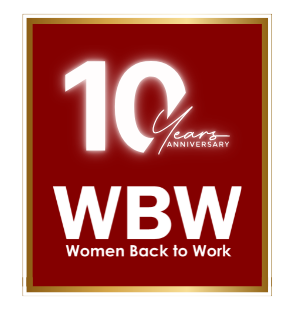Why top companies focus on women inclusion
Women leaders are exchanging position at the most noteworthy rates we have at any point seen, and aggressive young ladies are ready to do likewise. To gain significant and maintainable headway toward orientation fairness, organizations need to go past table stakes.
Women inclusion in workforce is very crucial for an organization to be successful.
Women are as of now fundamentally underrepresented in administration. For quite a long time, less women have ascended through the positions as a result of the “broken rung” at the initial step up to administration.
One of the main reasons why women feel excluded at work is because so many companies do not have flexible work policies.
The missing of inclusive culture will be the downfall of any organization in the long run. Everyone needs to feel included and worthy of higher-level jobs. Gender gaps needs to be turned into diversity equity and inclusion in workplace.
Presently, organizations are battling to clutch the somewhat couple of women leaders they have. And these elements are significantly more articulated for women of color.
The reasons women leaders are backing away from their organizations are telling. Women are similarly just about as aggressive as men, however at many organizations, they face headwinds that signal it will be more enthusiastically to progress.
They’re bound to encounter disparaging perceived hostilities, for example, having their judgment addressed or being confused with somebody more junior.
They are accomplishing other things to support representative prosperity and cultivate inclusion, yet this basic work is extending them far and going generally unrewarded.
Lastly, it’s inexorably essential to women leaders that they work for organizations that focus on adaptability, representative prosperity, and color, value, and inclusion (DEI).
In the event that organizations do not make a move, they risk losing their ongoing women leaders as well as the future potential of women leaders.
Young ladies are significantly more aggressive and put a higher premium on working in an equitable, supportive, and comprehensive working environment. They are watching senior women leave for better open doors, and they are ready to do likewise.
Why more women are leaving the organization?
Women leaders are requesting more from their organizations, and they are progressively ready to change tasks to get it. Three essential elements are driving their choices to leave:
1. Women need to progress, yet they face more grounded headwinds than men.
Women leaders are basically as logical as men at their level to need to be elevated to senior-level jobs. In many organizations, notwithstanding, they experience perceived hostilities that sabotage their power and sign that it will be more diligently for them to progress.
2. Women are exhausted and underrecognized.
Contrasted and men at their level, women leaders accomplish other things to support representative prosperity and cultivate DEI — work that emphatically further develops maintenance and worker fulfilment yet isn’t officially compensated in many organizations.
3. Women leaders are looking for an alternate culture of work.
Women are fundamentally more probable than men to give up positions occupations since they need greater adaptability or on the grounds that they need to work for an organization that is more dedicated to representative prosperity and DEI. Young ladies are likewise almost certain than current women leaders to say they are progressively focusing on adaptability and company obligation to prosperity and DEI. Organizations that do not make a move might battle to recruit and hold the up-and-coming age of women leaders.
Eminently, women of color are more aggressive in spite of getting less support: 41% of women of color need to be top chiefs, contrasted and 27 percent of White women. In US, according to a study 77% of the workforce is white.
It’s important that organizations and associates know about these elements, so they can all the more really advance value and inclusion for all women.
Albeit no review can completely catch the encounters of women with generally underestimated personalities, the current year’s discoveries highlight these unmistakable encounters:
Latinas and People of color are more uncertain than women of different races and nationalities to report their supervisor supports their profession improvement.
Asian women and Individuals of color are more averse to have solid partners in their groups.
Latinas and Asian women are more probable than women of different races and identities to have partners remark on their way of life or ethnicity.
LGBTQ+ women and women with handicaps report encountering really disparaging and negligible hostilities.
Women with handicaps frequently have their capability tested and subverted. They are fundamentally more probable than different gatherings of women to have their judgment addressed in their subject matter and to have partners get acknowledgment for their thoughts.
Most organizations additionally need to take explicit, exceptionally designated moves toward fix their broken rung. This beginnings with distinguishing where the biggest hole in advancements is for women ready to go.
Then organizations need to ensure women and men are set up for advancements at comparative rates, screen results to ensure they’re equitable, and root out one-sided parts of their assessment interaction.
Projects ought to be top notch — research demonstrates the way that in certain areas, bad quality projects can be more destructive than doing nothing at all.
And organizations ought to assess the effect of projects to survey whether advantages are equitable and recognize regions where certain gatherings might require more designated support.
Creating an inclusive culture and workplace for women, promoting gender diversity is a win-win situation for every organization.
Come join hands with Women Back to Work today to make your organization more women inclusive.
